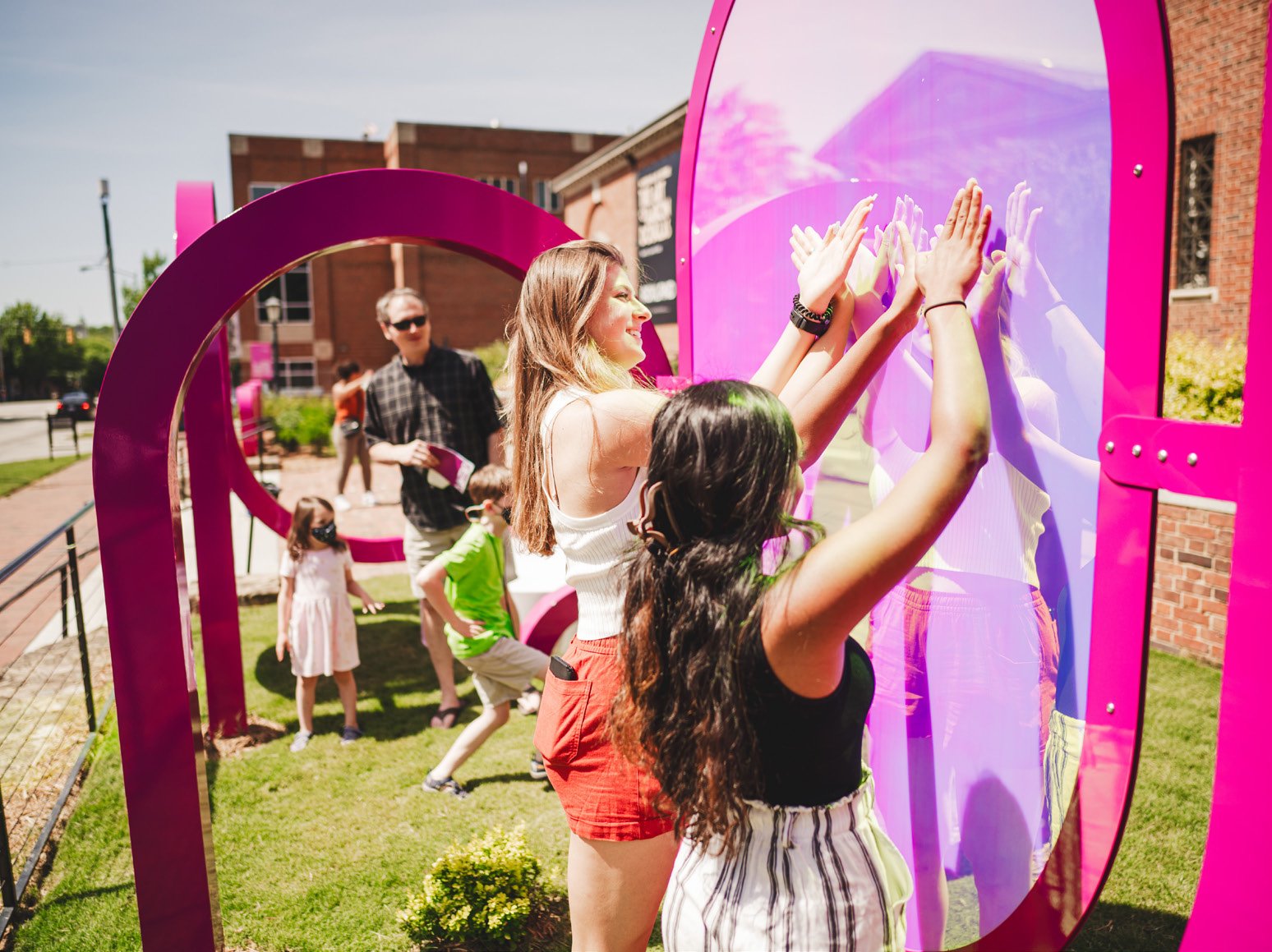
Bigger than a Model, Smaller than
pARC
THE URBAN CONGA
pARC is a spatial intervention created to serve as an open-ended programmable space for the community of Chapel Hill, Ackland Art Museum, and the University of North Carolina. The spatial installation becomes an extension to the conversations, activities, education, and other programming that currently exists within the doors of the Ackland Art Museum in Chapel Hill, NC. pARC was designed through a series of participatory design workshops that utilized play methodologies to create an inclusive process that allowed the community to share and contribute to the design process. During this process, it was found that many people within the community felt uncomfortable entering the museum or were unaware of the free programing that existed inside. Collectively, this feedback and other input of the community and museum representatives lead to the final design of the space and its programming.pARC was designed as a transformative communal space that provides an open-ended playable platform for the museum to better connect with the surrounding community. pARC’s design begins to showcase how play methodologies can be utilized as a design tool in the democratization of art institutions by beginning to take art off the pedestal and allowing people to engage and take ownership of the work and space. The installation becomes a landmark inviting people up off the street and into the museum that might have once been unaware or never felt comfortable entering the space. The installation becomes a transformative communal platform for all users to engage with the museum, university, and each other in new ways.The design of pARC both mimics and challenges the Georgian-style architecture of the museum. It adopts the symmetrical composition and breaks it into a series of interconnected arcs. These series of arcs grow up from the ground to frame out various social spaces that allow the users to put their own identity onto the work, the museum, and the surrounding space. pARC becomes a flexible communal space evoking endless ways to play, gather, perform, teach, converse, or even take a nap. The spatial intervention responds to the user and environment through the manipulation of light both during the day and at night as a tool to evoke moments of joy and wonder in the space. As visitors pass the work, they begin to realize their movement changes the colors of the panels sparking different filtered views of the context around them. The shadow play component of the work can be utilized in different areas of the work throughout the day and at night. At night the panels are backlit by red, yellow, and blue lights allowing you to play with your silhouettes and color mix with through your movements. pARC becomes a transformative landmark for all types of play, from physical to fantasy play, highlighting how play can be utilized as a critical tool in evoking more inclusive and equitable communal spaces.